
Foreward | Historical Narratives | Resources | Links | Contact
THE CAPTURE OF YORK
History is the truthful reconstruction of the past.
In the spring of 1813 the Americans planned a northeastern campaign, their objective the important port and shipyard at Kingston. However, intelligence reports regarding Kingston's military might were faulty, and its grossly exaggerated defences intimidated the American planners. Commodore Isaac Chauncey, United States naval officer, believed Kingston was defended by 1500 regulars and batteries totalling fifty guns. In fact, there were only 1200 regulars in all of Upper Canada and they were scattered throughout the forested wilderness from Prescott to Fort Erie. The inflated assessment of defences at Kingston saved it from direct assault for the duration of the war and prevented the destruction of the British position in Upper Canada.
An alternate and more vulnerable target was the province's poorly defended tiny capital York with a population of 650 souls. The change in strategy from attacking the more difficult but critical naval dockyard at Kingston for the strategically unimportant provincial capital of York eventually proved to be a blessing for Canada and a serious military blunder for the United States. However, Chauncey's gleeful comment that its capture had inflicted on his enemy "a blow that he cannot recover"was not altogether without foundation. A large ship on the blocks was destroyed and the armaments and naval stores located there to equip the British squadron on Lake Erie never did reach Amherstburg. Instead they were captured or destroyed by the American raiders.
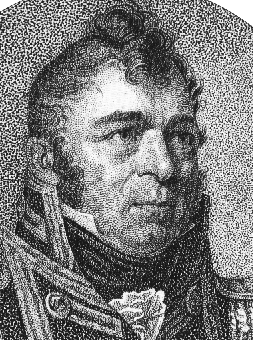 |
|
Commodore Isaac Chauncey |
And so the war came to a town unprepared for battle. While York was given a role as a shipyard and naval base which made it a target for attack, it was never given the means of resisting. General Isaac Brock's proposed defence works to ensure its security were not implemented the Governor-in-chief Sir George Prevost who bore the blame for having permitted a frigate to be laid down in an unprotected position. General Sir Roger Sheaffe, who succeeded Brock, urged a month before the American assault that York "be put into a more respectable state of defence," but nothing was done. York remained a sitting duck. The shipyard thus became an allurement to the enemy and a heavy cost to the inhabitants of York.
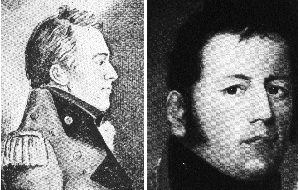 |
|
Brock; Prevost; Sheafffe |
On April 25th an invasion fleet of fourteen ships set sail on Lake Ontario from Sackett's Harbour just southwest of the mouth of the mighty St. Lawrence River. Their destination: York. Chauncey's squadron was packed with 1700 regular American infantry, some riflemen and an old, obese and very seasick Major General Henry Dearborn. The flotilla's commander, Dearborn, his aide General Zebulon Pike and Commodore Isaac Chauncey were aboard the flagship President Madison. Because of Dearborn's sickly condition, Brigadier General Zebulon Pike conducted the landing.
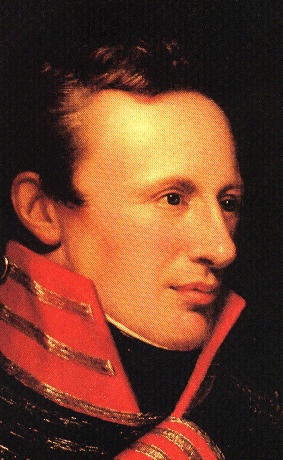 |
|
Brigadier General Zebulon Pike |
Early Monday evening on April the 26th, sentries atop the Scarborough Bluffs sighted the approaching American ships. To forewarn the town and the garrison, the signal gun boomed out its warning of war across farm and field, while the pealing bells of St. James summoned militiamen to York. In the midst of what must have been mayhem, one observer on the Bluffs took time to observe that the sight of the ships was beautifully serene. He recorded that in the north-east winds of the clear evening air, the tall sailing ships with their billowing snow-white canvas made a serene, enchanting scene on the lake.
Captain Isaac Chauncey submitted the following report to the Secretary of the Navy.
"USS Madison at anchor off York, Upper Canada, 28 April, 1813
"Agreeably to your instructions and arrangements with Major General Dearborn, I took on board the squadron under my command, the general and suite and about 1700 troops, and left Sackett's Harbour on the 25th instant for this place. We arrived here yesterday morning, and took up a position about one mile south and westward of the enemies principal fort and as near the shore as we could with safety to the vessels. The place fixed upon by the major general and myself for landing the troops was the site of the old French fort Tarento."
The Task Force came to anchor a half kilometre off shore less than two kilometres west of Fort York where they and the worried townsfolk of York awaited the coming of dawn. Orders issued earlier by Brigadier-General Pike exhorted the soldiers "to be mindful of the honour of the American army and the disgraces which have recently tarnished our arms." The latter was in reference to the fiascoes suffered by American forces at Detroit and Queenston. Pike urged the men to "endeavour by a cool and determined discharge of their duty to support the one and wipe off the other."
The same ordinance mentioned the ominous consequence should any soldier waffle or waver in the face the fusillades to come. Officers were ordered to "pay the greatest attention to the coolness and aim" of their men under fire, and should any man fire or quit his post without orders, he "must be put to instant death."Soldiers were expected to be humane as well as heroic, and were instructed to ensure "that the blood of any unresisting enemy would never stain their weapons. Courage and bravery in the field do not more distinguish the soldier than humanity after victory." Soldiers were reminded that many of "the unoffending citizens of Canada are our own countrymen and that the Provinces have been forced into war." Their property was to be considered "sacred" and any soldier who dishonoured his profession by plundering would if convicted be "punished with death." Pike concluded with this prayer: "Heaven grant us success and Canada will be ours."
York was almost defenceless and "a reprehensible apathy appears to have prevailed." The few antique cannons were poorly positioned and largely ineffective. Others intended for use on the ship under construction which might have been used to good advantage were lying on the ground "partly covered with snow and frozen mud." York's defenders numbered only 600 men, made up of 300 York Militia, a company of Glengarry Light infantry, two companies of the 8th or King's Regiment of Foot, one company of the Royal Newfoundland Regiment, thirteen men of the Royal Artillery, a small squad of the 49th Regiment of Foot and fifty or so Missisauga and Ojibway braves.
At eight [* See End] the next morning, American assault craft set off for shore. The alarm was sounded immediately, and members of the militia, Native warriors and two companies of the King's Regiment, one of which was a grenadier company, were sent to oppose the landing. A company of the Glengarry light infantry was also expected to oppose them, but got lost and arrived too late to assist.
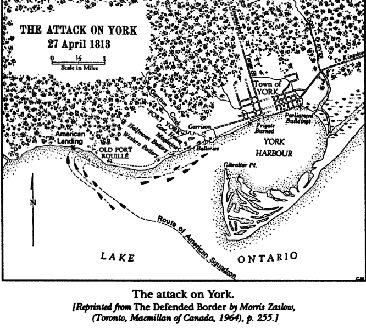 |
|
Attack On York |
Strong east winds had carried the bobbing boats of the attacking force too far west, causing them to miss a clearing near what is now the bandshell at the CNE grounds and land instead near present-day Sunnyside. They were met by spirited fire from Native sharpshooters armed with muskets and rifles whose deadly volleys, according to one American attacker, served "to quicken our approach." The blue-and-grey clad riflemen jumped into the three-foot deep water, splashed ashore and staggered up the steep bank to secure the high ground. Scarlet-coated grenadiers outnumbered three to one poured out of the pale, green, spring foliage and with bayonets brandished charged into the American ranks in an attempt to force them back to the water's edge. However, to cover their assault troops the American schooners off shore manoeuvred into close range and sprayed the British with a murderous barrage of grape-shot. This continuous, well-directed fire of small iron balls decimated the men and their morale and the redcoats withdrew back into the bush.
Very little attempt was made to rally the untrained militia and within two hours the invaders had established a secure beachhead just west of York. When the firing ceased shortly thereafter they expected to see "a flag of surrender," for according to the Americans "the enemy was received with a spirit which produced a rapid retreat."
Brock's successor, Major-General Sir Roger Hale Sheaffe moved with one pace on one path. He consistently declined to seize the initiative and take risks, and his reaction at York was no exception. Military strategists suggest he should have kept his force intact until the enemy plan was known and then risked all in a sharp, determined counter-attack on the beachhead. Instead he split up his tiny company and his piecemeal attacks, some of which he led himself, were ineffective against the Yankee invaders famous for "their sharp-shooting and loose fingers."
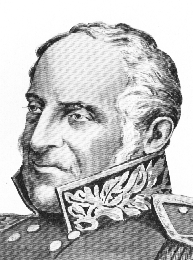 |
|
Roger Hale Sheaffe |
Decideing on a strategic withdrawal eastward to Kingston, Sheaffe took off leaving the militia and the citizenry to make whatever terms they could. With him were the invaluable shipwrights and some 180 redcoats ready to fight another day. Before departing he ordered the destruction of everything of worth including the Grand Magazine which contained five hundred barrels of gunpowder. The sound of the spectacular blast followed the water along the shoreline and was heard at the Port of Oshawa some 33 miles away. The thunderclap, which the Americans mistook for a "subterraneous mine," killed and wounded nearly one-sixth of the invading force as well as a number of the town's defenders. One witness said that the magazine rose slowly assuming as it did the shape of a vast balloon-shaped cloud from which rained huge chunks of masonry and wooden beams on the heads of those who huddled beneath.
 |
|
Exploding Magazine |
The stupendous explosion resulted in "stones and masonry falling thick as hail, the larger pieces, some blocks a yard-square, sinking into the very earth." York's Sheriff John Beikie's letter to his brother included this comment: "The General ordered a retreat and fire to be set to the magazine. This was the grandest and at the same time the most awful sight I have ever seen."
The American commander, Zebulon Pike, famed explorer of Pike's Peak,[** See Below] had just sat down on a stump to interrogate a captured British sergeant when with a blinding flash of flame and smoke, the infernal blast filled the air. Pike's back and chest were crushed in the hail of "stones of all dimensions" that fell upon friend and foe alike.
As surgeons were removing the general and others from the debris, the American troops gave a "tremendous huzza." Pike revived enough to ask the reason for the cheering. "The British Union Jack is coming down, General, and the Stars are going up." Pike heaved "a heavy sigh of ecstasy and smiled even amidst his anguish." Before he had left home that morning, Pike had written to his father: "If we are destined to fall, may my fall like Wolfe's be to sleep in the arms of victory." He was carried aboard the commodore's ship and as he lay dying, the British standard was brought to him. He made a sign and it was placed under his head. The flag was later sent to Mrs. Pike "as a memento of the first victory gained over the enemy in Canada."
Commodore Chauncey left this account of the landing and death of Pike.
In His Own Words"The debarkation commenced about 8 o'clock A.M. and was completed about ten. The wind blowing heavy from the eastward, the boats fell to leeward of the position fixed upon, and were, in consequence, exposed to a galling fire of the enemy, who had taken a position in a thick wood.
"The schooners were obliged to beat up to their position, which they did in a very handsome order, under a very heavy fire from the enemy's batteries, and took a position within about six hundred yards of their principal fort, and opened a heavy cannonade upon the enemy.
"The troops, as soon as landed, were formed under the immediate orders of brigadier general Pike, who led in a most gallant manner the attack upon the forts, and after having carried two redoubts in their approach to their principal works, the enemy (having previously laid a train) blew up his magazine, which in its effects upon our troops, was dreadful, having killed and wounded a great many and amongst the former, the ever to be lamented brigadier general Pike, who fell at the head of his column by a contusion received by a heavy stone from the magazine."
Chaos occurred at the casualty clearing station, where suffering men with every form of awful injury were sorted according to their miseries. Surgeons worked frantically "to rescue fellow creatures from an untimely death," the operating theatre in which they laboured to save lives resembling nothing so much as a busy butcher shop. Cries of the mutilated men could be heard above the hollering, blaring bugles and incessant rattle of small arms fire.
The cause of the explosion was not known to the American soldiers who suspected some foul enemy ploy, a booby-trapped trick to catch the attackers off-guard after they assumed the fort had been abandoned and the battle won. General Dearborn, resplendent in a uniform that according to eye witnesses "would not have shamed Napoleon," came ashore enraged and vowed to "make the town smoke for it." However, when he was assured by the Reverend John Strachan that the explosion was an accident, and he cited the deaths of Canadian militiamen as proof of this, Dearborn cooled down and promised that the town would not be razed. Some of the men ignored Pike's admonition against pillage and plunder and angrily ran amok, wreaking vengeance by looting and setting fire to all public structures. The Government Building, the Governor's residence, the Court House and the Block House went up in flames.
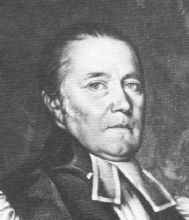 |
|
The Reverend John Strachan |
Beikie's letter mentions the destruction. "After the capitulation "then the business of plundering and burning commenced and did not cease until the evening of the 1st inst. When they all went on board their vessels. They have broken every door and window in the council office and burnt a schooner."
John Strachan was the only person prepared to confront General Henry Dearborn about the burning and looting. After talking with Dearborn, Strachan recorded that "he treats me with great harshness, tells me that we had given a false count of the officers and told me to keep off - not to follow him as he had business of much more importance." Strachan, however, did not 'keep off' and continued to dog Dearborn.[*** See Below]
A report in the Kingston Gazette angrily attacked the wanton vandalism of the Americans. The account indicated that the burned bare walls "alone remain, a monument to the Gothic ferocity of our enemies." This destruction created a thirst for revenge which was satisfied by British soldiers when they entered Washington on August 24th, 1814 and torched the White House and the Capitol building. In doing so they achieved "an exploit which for moral effect both in America and in England has never been excelled." President Madison reported the British action to Congress.
In His Own Words"British soldiers wantonly destroyed public edifices under the insulting pretext that it was done in retaliation for a wanton destruction committed by the army of the United States in Upper Canada when it is notorious that no such destruction was committed."
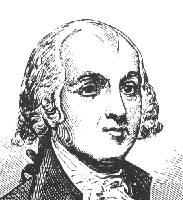 |
|
President James Madison |
The remains of scorched U.S. president's home, which was painted white to hide the blackened embers, has ever since been known as the White House.
When the ex-president Thomas Jefferson harshly criticized the wanton burning of Washington by British troops, John Strachan, Bishop of Toronto, addressed the following letter to Thomas Jefferson, Esquire, of Monticello, ex-president of the United States of America. In April, 1813, the public buildings at York, the capital of Upper Canada, were burnt by troops of the United States, contrary to the articles of capitulation. They consisted of two elegant halls, with convenient offices for the accommodation of the Legislature and of the Courts of Justice. The library and all the papers and records belonging to these institutions were consumed: at the same time the church was robbed, and the town library totally pillaged. Commodore Chauncey, who has generally behaved honourable, was so ashamed of this last transaction, that he endeavoured to collect the books belonging o the library and actually sent back two boxes filled with them, but hardly any were complete. Much private property was plundered and several houses left in a state of ruin. Can you tell me why the public buildings and the library at Washington should be held more sacred than those at York?" No more was heard from Jefferson. Commodore Chauncey said he was ashamed to have to admit that the books were stolen by American soldiers "much to my mortification." The mace vanished from the Parliament Buildings and turned up later in a the military museum in Annapolis, Maryland. President Franklin Roosevelt returned it 121 years later on the occasion of Toronto's centennial birthday in 1934. Today it hangs on the wall of Fort York. The public Archives of Canada contain documents covering requisitions for losses suffered in the war. They record that twenty-three people at York submitted the following details regarding losses in 1813: five stores were robbed; thirteen homes entered; farms were raided and horses and cattle stolen. St. James Church lost some of its treasures, a doctor his surgical instruments, a storekeeper two barrels of rum, the town's only printing press was wrecked and an American officer was seen carrying a silver dinner service through town. The plunder included Sir Roger Hale Sheaffe's baggage, which in his haste he had left behind. Because of the quality of its contents, it was highly prized. It included "a handsome assortment of wines" and Sheaffe's "superb scarlet coat, the most elegant thing I ever saw, embroidered in gold and of the finest quality." The coat which cost $300 was sold to an American officer for $55. Sheaffe's other possessions were offered at public auction at Oswego. "All of his things sold very high, being good and much wanted by our officers."¨ Sheaffe's musical, jewelled snuff-box, which afforded considerable amusement, was taken as a token by Dearborn himself. York was captured after some close action, the entire encounter lasting from 8:00 a.m. until the Stars and Stripes were flying above Fort York at 2:00 p.m. The official surrender took place in a house on Palace Street - now Front Street - after Colonel Cromwell Pearce paraded his soldiers through the streets to the tune of Yankee Doodle. The defenders lost sixty-two men killed and listed seventy-seven wounded less than half the American total. When word of the occupation of York reached Washington, it was forecast that "the attack and capture of York presaged future and greater victories" thanks to "the consummate skill and conspicuously heroic valour of the American military." In the midst of the pandemonium "General Sheaffe set off with the regulars and their officers for Kingston." Instead of staying to get killed or captured, Sheaffe decided on retreat, a decision considered by some to have been sound and sensible militarily. His action was compared by the American secretary of war to "carrying off the kernel and leaving us the shell." News of Sheaffe's departure from York was greeted with a chorus of lamentations. He was widely criticized for leaving the capital to cope on its own, its 650 undefended citizens, according to Sheriff John Beikie of York, "left standing in the street like a parcel of sheep." Many shared the outraged view of the minister of St. James Church, Dr. John Strachan, that York had been left at the mercy of the marauding American army while Sheaffe's only thought seemed to be for his own safety. Strachan denounced Sheaffe as a commander who was In His Own Words "destitute of that military fire and vigour of decision, which the principal commander in this country must possess in order to preserve it" Sheaffe, meanwhile, had mounted his horse and ridden off in hot haste, heading eastward down King Street across the Don River towards Kingston, leaving his troops to follow on foot. When he arrived at Levis Annis's hotel in Scarborough some 12 miles east, his horse was well lathered from the hard gallop, for he had ridden from York "without drawing rein." According to one observer, Sheaffe's actions earned him the "universal reproach of every man and woman." While some of the complaints were described as "the idle exaggerations of the ignorant which were beneath notice," others came from military men and could not be ignored. Officers of the militia "soberly and seriously concurred in the general criticism of Sheaffe." It was even suggested that Sheaffe should be indicted for misconduct. Among "the most clamorous of the impeachers" was a Major Allan who charged that Sheaffe had given him no orders. Sheaffe's conduct on that occasion did not redound to his credit, for it seemed to many citizens that York's loss was not veiled in a blaze of heroism. At the time a drumfire of debate in press and public raged around Sheaffe and disagreement persists to this day as to whether his decision to leave the capital to its captors was wise or wimpish. A final decision still awaits the impartial verdict of history. Both Prevost [inset] and Sheaffe were faulted for this sad affair. Prevost for permitting military and naval stores to be located badly needed for Lake Erie and a large sloop of war to be built in so exposed a position. Sheaffe was faulted for failing to have fortifications well ordered, not concentrating his troops, and ensuring better order and alertness. He appears to have acted without any fixed plan. Sheaffe's retreat finished his career in Canada. His superior in Quebec, Sir George Prevost, informed London that Sheaffe had "lost the confidence of the Province by the measures he pursued in its defence." A Sheaffe supporter argued that Sheaffe "was sacrificed to Ignorance and Jealousy" by those who did not understand his character. It seems the British government agreed, for Sir Roger was raised to the rank of lieutenant-general in 1821 and to general in 1828. Sheaffe died in Edinburgh in 1851. The surrender terms contained three points: that regular, militia and naval personnel - other than surgeons - become prisoners of war; that naval stores be given up, but private property be guaranteed to citizens; that papers of the civil government be retained by its officials. Since American vessels were already overloaded, the militia prisoners were paroled. The Americans left as soon as they could. There was no point in staying because they their ships were vulnerable to attack. The capture of York had no major effect on the course of the war. However, York with its militia paroled and defences destroyed could be captured at will, subject only to naval power on Lake Ontario. The sight of sails caused alarm for the remainder of the war. Often over the next few months, tall ships of sail flying the dreaded striped flag hove into view from the Scarborough Bluffs. Each time the alarm sent citizens scurrying to pack their most valuable goods and high tail it to the woods, that lay beyond the township square bounded by Gerrard to the north, Parliament to the east and Spadina to the west, where they were hastily hidden. American cannon fire fell elsewhere, however, and York became the base hospital for casualties from the bloody campaigns on the Niagara Frontier. The wounded from that conflict filled the general hospital and overflowed into private homes. Even St. James Church was converted into a hospital "from the pure air of which the progress of the sick and wounded was brought to a state of convalescence."
[*] This time is according to the Americans. It is interesting to note that Sheaffe reported that the contest commenced between 6 and 7 o'clock. There was then no agreed world time base, and each locality had its own notion of correct time which varied drastically from place to place. [**] A mountain in Colorado explored by him in 1806, but known by Natives and some Spanish explorers long before. [***] .In fact, Strachan's will power and personal presence was so strong that it was said later, that at times it was difficult to tell from the interview which of the two men was the conquered and which the conqueror. Hinting at the possibility of a terrible retaliation by the British Navy, Strachan went a long way toward saving York from complete destruction.Copyright © 2004 W. R. Wilson